Is nuclear war coming? A close look at Doomsday planes — the presidential airborne command post
Is nuclear war coming? A close look at Doomsday planes — the presidential airborne command post
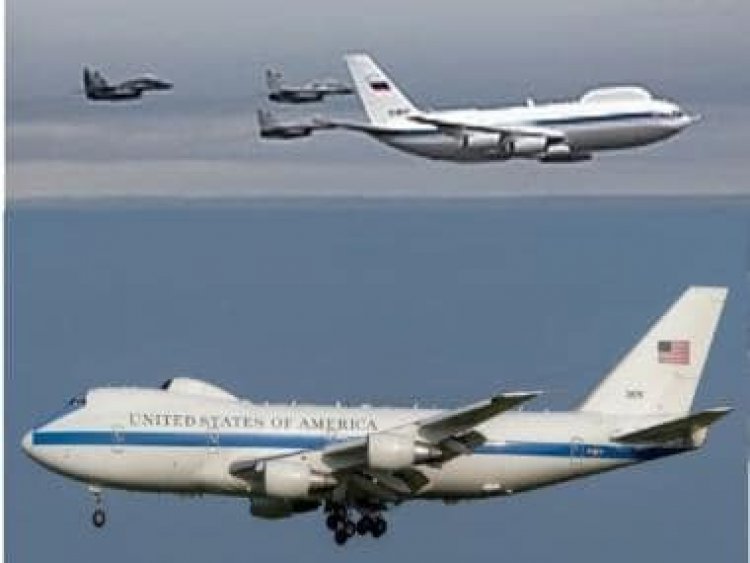
Nuclear war clouds are repeatedly appearing on the horizon. At least on five occasions, President Vladimir Putin or his foreign minister have used the ‘N’ word. Putin’s nuclear sabre-rattling is part of Russia’s escalate-to-deescalate strategy that he himself was its author as a young official. NATO has increased its troop deployment in Eastern and Central Europe “several times over”. The United States Air Force has sent its strategic bombers, the B-52 and the Stealth B-2, to European airbases closer to Russia. The frequency of bomber flights has increased over Europe and the Pacific.
Meanwhile, a little while earlier, Putin ordered a drill of Russia’s strategic deterrence forces, which included intercontinental ballistic missiles (ICBMs), submarines, and heavy bombers, the entire Russian nuclear triad. In the latest incident in a string of drone attacks on Russian military infrastructure, a Ukrainian drone reportedly travelled across the border and targeted a Russian Tu-22M bomber base. The massive Russia retaliatory strikes in response to the Crimean bridge attack clearly show the anger. The possibility of a nuclear weapon use is at an all-time high. We hope it never gets used, but what if it does? Both the US and Russia have special airborne presidential command posts to manage major hostilities, especially a nuclear war. These are appropriately called the “Doomsday” airborne command and control aircraft. Doomsday aircraft are essentially large civil aircraft fitted with special very long-range communication equipment, and some other features.
Russian Doomsday Aircraft
The Russian President’s “Doomsday” aircraft is a specially configured Ilyushin Il-80 which is also referred to as “Flying Kremlin”. Interestingly it was seen flying low over Moscow early May 2022 during a Victory Day celebrations rehearsal. Two MiG-29s were seen escorting the Il-80 called “Maxdome”. Also, other significant participants in the flypast were the strategic Tu-95MS and Tu-160, fifth-generation Su-57 fighter and Tu-22M3 long-range bombers.
In view of the ‘N’ word being repeatedly used, such a flight raised the tentacles of the strategic community. Earlier, Russian President Putin had said that he “won’t brag about nuclear weapons, but will use them” if necessary. The Maxdome had last participated in such a flypast in 2010. Though the aircraft did not finally fly on the Victory Day, interest in the airborne presidential command post got rejuvenated.
What is the Maxdome?
Il-80 Maxdome is a modified Ilyushin Il-86 airliner converted into an airborne command and control centre, and the Russian presidential office in the sky. The aircraft reportedly made its first flight in 1985, and was inducted in 1987. Four were built, and three are still in service. Such aircraft are required for use if the ground-based command infrastructure were to get destroyed in the event of nuclear war or a major disaster, and the aircraft’s role is similar to that of the US Air Force (USAF) Boeing E-4B.
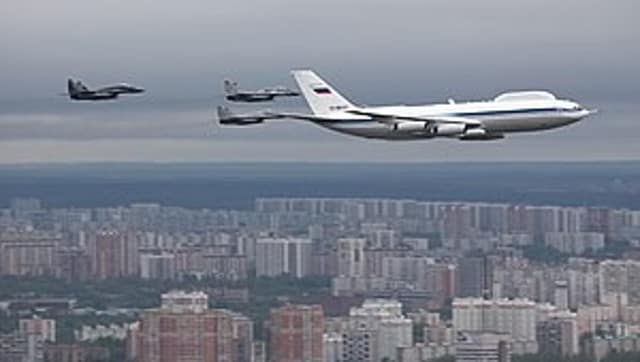
As can be seen in the picture, the Il-80 aircraft has no windows, except cockpit wind-screens and direct-view side panels. This is meant to protect the sensitive electronic equipment and operational crew and the decision makers from the nuclear radiations, and the ensuing electromagnetic pulse. There is only the upper deck forward door on the left and the aft door on the right. There is only one air-stair door, instead of the normal three. Even the aft cockpit windows are blocked with baffles. Unlike the standard Il-86 airliner, the Il-80 has two large electrical generator pods, 9.5 metres long, mounted inboard of the engine nacelles.
Like the E-4B, the aircraft has a dorsal SATCOM canoe, believed to house advanced satellite communications equipment, and a trailing wire antenna mounted in the lower aft fuselage for very low frequency (VLF) radio transmission and reception. These could be for communication with ballistic missile submarines. The aircraft can be refuelled in flight. The aircraft has two podded external electrical generators to cater for additional on-board electronics. The aircraft are assigned to the 8th Special Purposes Aviation Division at the Chkalovsky airbase near Moscow and can be seen in the picture below. Three are still known to be in service.
Russia’s next doomsday plane would be the Il-96-400M. It will be an upgraded version of the four-engine civil airliner. The work is reportedly underway in Voronezh. The flight range of the new aircraft will be double that of its predecessor, and communicate effectively with strategic nuclear forces within roughly 6,000 kilometres. The aircraft will have a very powerful self-defence system and will always be escorted by air-defence fighters. The aircraft will have much better nuclear and thermal effects shielding, acoustic control, and upgraded air-conditioning to cool the more powerful heat generating electronics. The aircraft are likely to be inducted around 2026. In 2020, one of the aircraft was infiltrated through the cargo-hatch, and robbed while undergoing maintenance. 39 pieces of radio equipment, some having gold and platinum electric components were stolen in this very embarrassing incident.
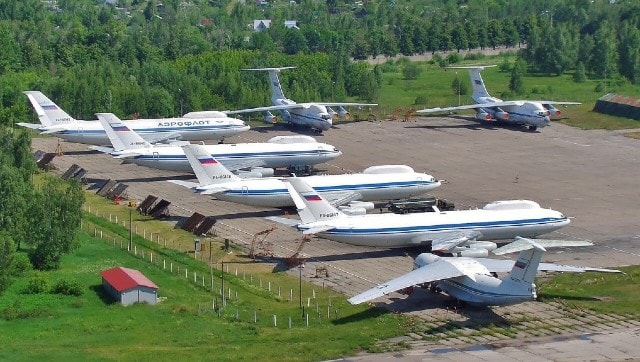
The Tu-214 VIP is the presidential aircraft with a maximum range of 9,200 km (Picture Below). Tu-214PU-SBUS is an airborne command-and-control (C2) variant. On 21 June 2018, the Russian Ministry of Defence (MoD) received the second.
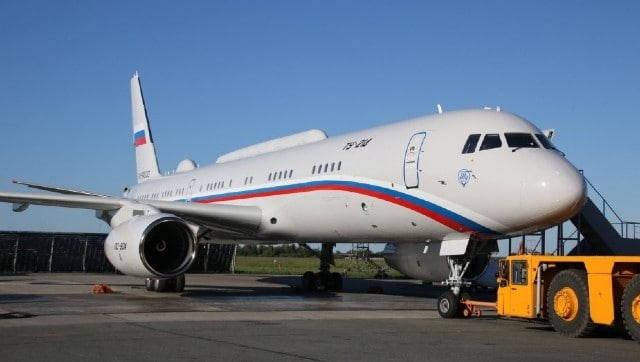
American Doomsday Aircraft
In the US, the aircraft are officially called the National Airborne Operations Centres (NAOC). The aircraft are also equipped with a full set of traditional analogue flight and navigation instruments as they are less affected by cyberattack. The US airborne command posts have been operational since the early 1970s and can be termed as a Cold War legacy. The planes are essentially flying war rooms and are manned by military strategists and communication aides. They would support presidential decision-making.
The Boeing E-4, also called the “Night Watch” was evolved from the Boeing 747-200B, and was part of the National Emergency Airborne Command Post (NEACP) programme. E-4B made its first flight on 13 June 1973, and was inducted in service in 1974. The aircraft is meant to provide cyber secure command and control connectivity as provided in US governments Title 10. At least one E-4B is reportedly always on alert station, and satellite technology offers it worldwide communications using a wide range of frequencies covering from 14 kHz to 8.4 GHz. The aircraft’s main deck has been configured into several operational areas. These include designated areas for command and communications, briefing and conference, data analysis, and for rest. The aircraft can accommodate up to 112 people. The Joint Chiefs of Staff direct the E-4B operations, and the operational execution is by US Strategic Command.
Traditionally, one E-4B was always standing by at Andrews Air Force Base in a Washington D.C. suburb, for quicker access to the president during a global crisis. When the US President travels outside of North America, an E-4B is positioned at an airbase near the President’s destination. The E-4B is normally used by the U.S. Secretary of Defence when traveling abroad on official visits. A more modern replacement for the E-4 is being developed. It is being called the Survivable Airborne Operations Center.
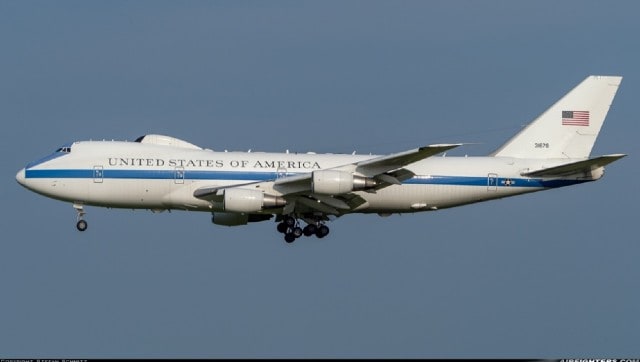
The Boeing E-6 Mercury is based on the Boeing 707-320. The latest variant, the E-6B “Looking Glass”, entered service in 1998, and can communicate directly with fleet ballistic missile submarines and also remotely control Minuteman ICBMs using the Airborne Launch Control System. The E6-B has the capability to fly for 72 hours before refuelling. TACAMO (Take Charge and Move Out) is the term used for survivable communications. These aircraft remain on alert near Offutt Air Force Base in Nebraska. At least one E-6 is on airborne duties at all times.
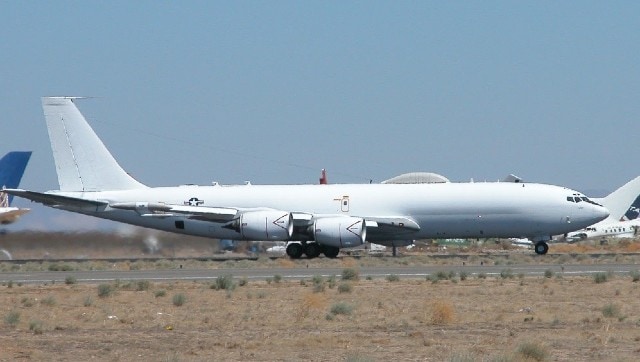
There was a proposal to have a single multi-task aircraft to replace the E-4B, RC-135 Rivet Joint, E-3 Sentry, and E-8 Joint STARS. Northrop Grumman had proposed a Boeing 767-400ER platform to be called E-10 MC2A. It was to be built by a consortium between Northrop Grumman, Boeing, and Raytheon, as a central command authority for all air, land, and sea forces, including unmanned, in any combat theatre. The proposal was finally shelved because of funding constraints.
Conclusion
On the nuclear disarmament and stability front, the discussions on the newer versions of Strategic Arms Reduction Treaty (START) and Strategic Offensive Reductions Treaty (SORT) cannot progress because of renewed frictions in Europe. The US, China and Russia are all modernising their nuclear weapons. The Russian nuclear warnings in Ukraine are primarily to prevent NATO from entering conflict. Amidst all this, Russia’s plan to upgrade their Doomsday aircraft fleet is being watched by the West and is considered upping the nuclear ante.
Even if ground-based command centres are destroyed by an enemy first strike, the Doomsday aircraft would be able to manage the command and control of nuclear assets. Some have called the aircraft the Swiss Army knife of military communications. The aircraft provides a high level of physical security and resilience. These are many specialised aircraft that are expensive to develop and maintain.
No president has had the occasion to get into one for actual operations. Even after the 9/11 terror attacks, President George W Bush preferred to be on-board the VC-25A (Air Force One), instead of the E-4B. Till date China does not have any equivalent aircraft. Similarly, India perhaps does not need one as the chain of command and “fog-of-war” decision matrix for most countries is in place.
The writer is Director General, Centre for Air Power Studies. Views expressed are personal.
Read all the Latest News, Trending News, Cricket News, Bollywood News,
India News and Entertainment News here. Follow us on Facebook, Twitter and Instagram.
What's Your Reaction?



























































